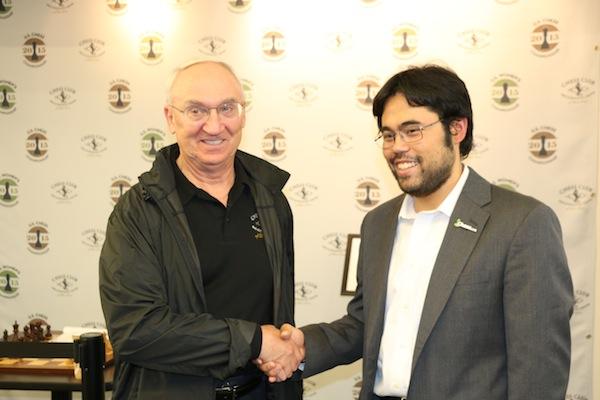
A Look Back At My Path To Winning The U.S. Championship
This is my first blog on Chess.com, so I'd like to write something really eloquent and profound so I can look back on this moment. However, I am a chess player and not a poet or philosopher!
Coming off of my recent win in the U.S. Championship, I have decided to share a few of my games and what I think one can learn from them. Enjoy!
-Hikaru
I would think the main purpose of this game is to be bold! Take chances and risks and sometimes you will be rewarded. However, it's also worth noting that no matter how bad the position, there are always resources and ideas if one looks hard enough.

The next game was against GM Varuzhan Akobian. I've played Var quite a few times over the years with good results, and this game was not an exception.
The main thing to take away from this second-round game is that you have to play openings or ideas that suit your style. GM Akobian has been playing the French for a very long time, but while he is a very strong positional player, tactical play doesn't suit him as much.
Below is a position from my third-round game with the defending U.S. champion, Gata Kamsky. After being down a pawn in the middle game, Gata put up a staunch defense. The reason I am including this game in the blog is because it highlights one of the hardest things to do at a grandmaster level: switching gears. After nursing an advantage for such a long time while preventing counterplay, in this critical position I used way too much time trying to find a win WITHOUT ALLOWING COUNTERPLAY.
The main lesson to be learned from the Kamsky game is to not be afraid of complications even if you've been trying to actively avoid any counterplay in a better position for a long time. Had I not used up all my time in the position before 50...Bf8, most likely I would have won.
The next game I am featuring was my win in round eight against the 16-year-old GM, Kayden Troff. In this game, I chose to play the Benoni as I was looking for something imbalanced in an attempt to win. However, I suspect this game will be more remembered for my postgame interview with Maurice Ashley with featured the two key catchphrases of "mickey mouse moves," and "moronic."

The two main keys to this game are as follows: when you see a good continuation, always look for a better one (ie 17...Qg7 instead of g4), and to always try and make aggressive and logical moves in sharp and tactical positions without any "half-moves" such as 23...Bd7.
In the last round, I squared off with my long-time teammate from the Olympiads, GM Alex Onischuk.

So once again, the question is what can be learned from this game?
The two main things: being practical in positions that are not 100 percent drawn, and second, always staying attentive and alert even when you think that there is no real danger.